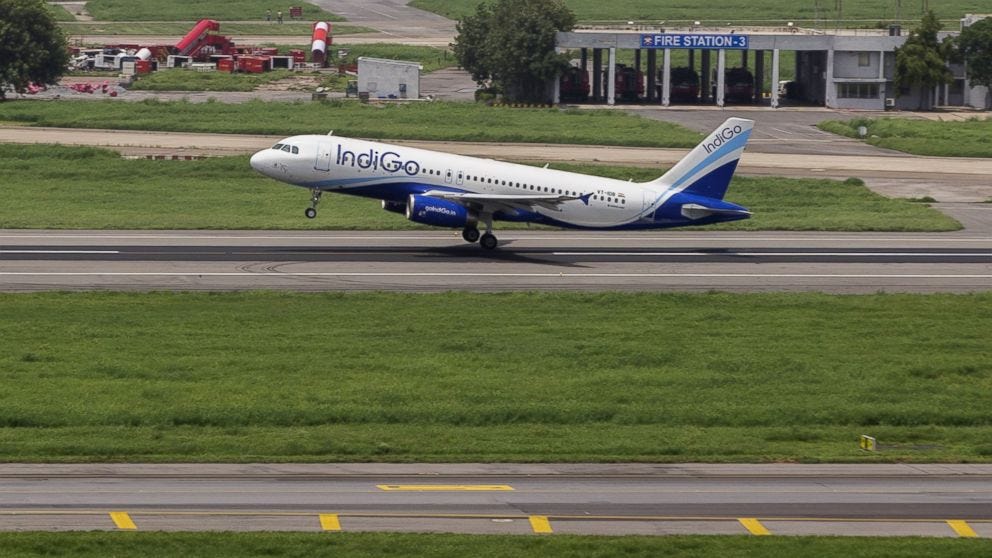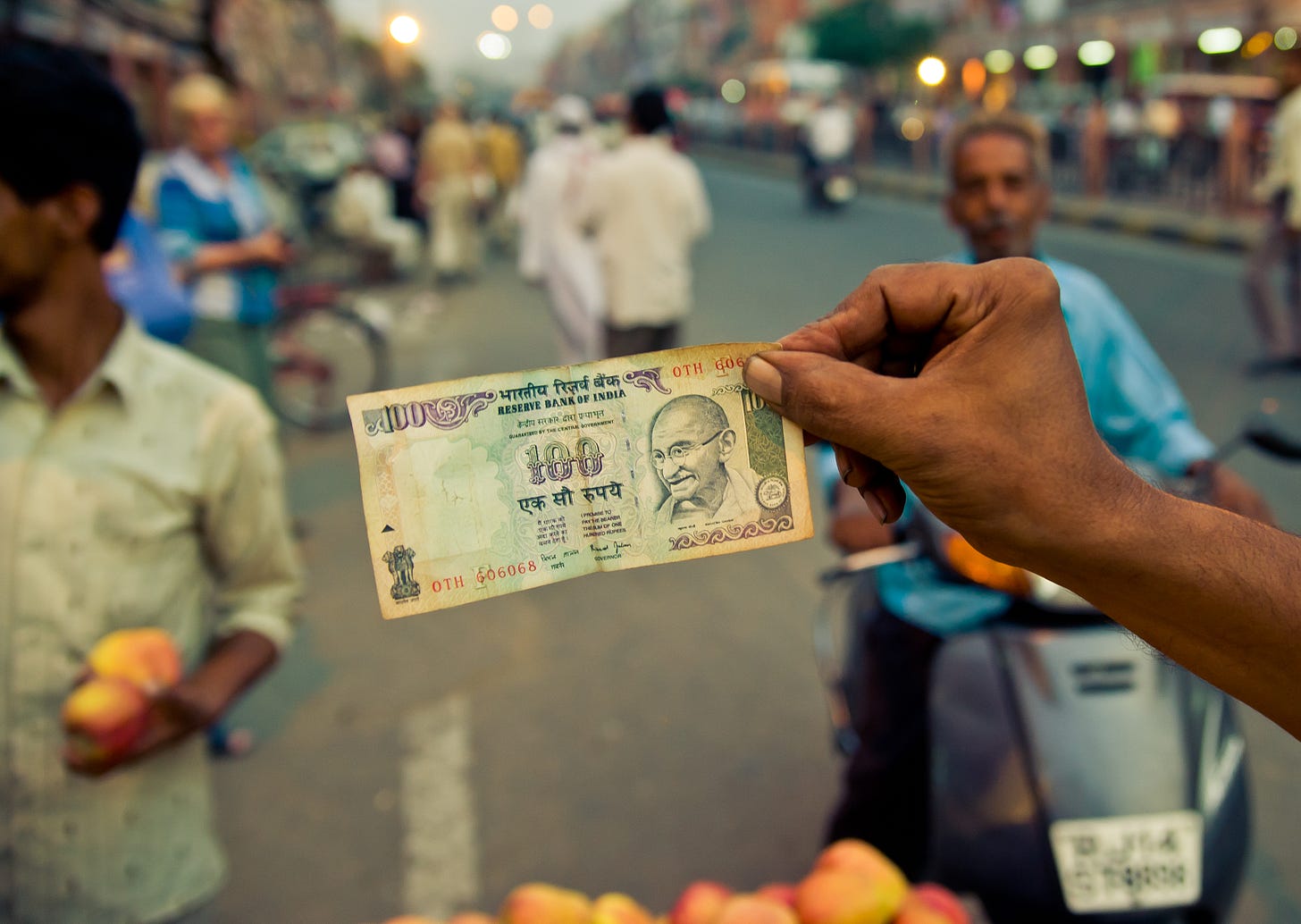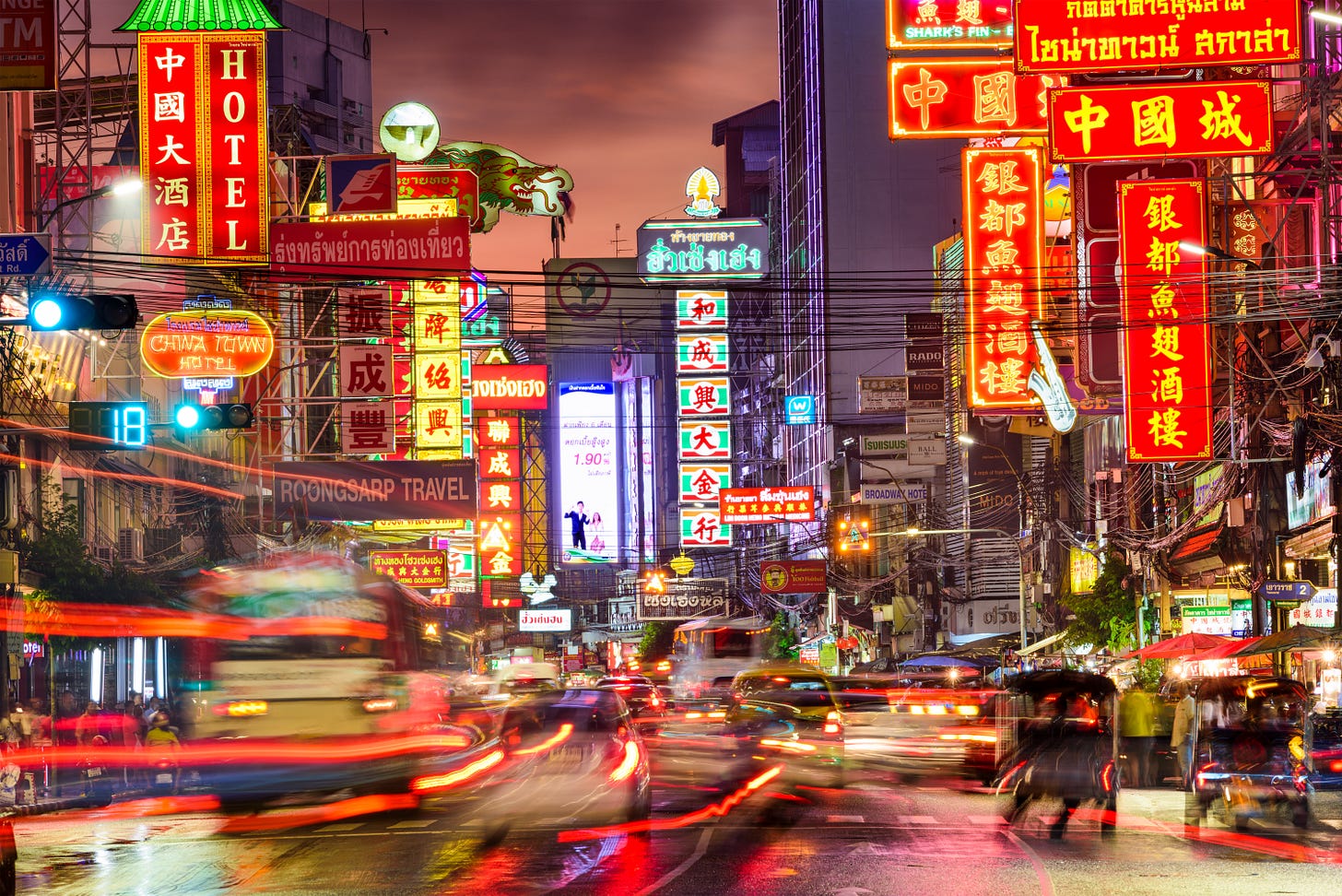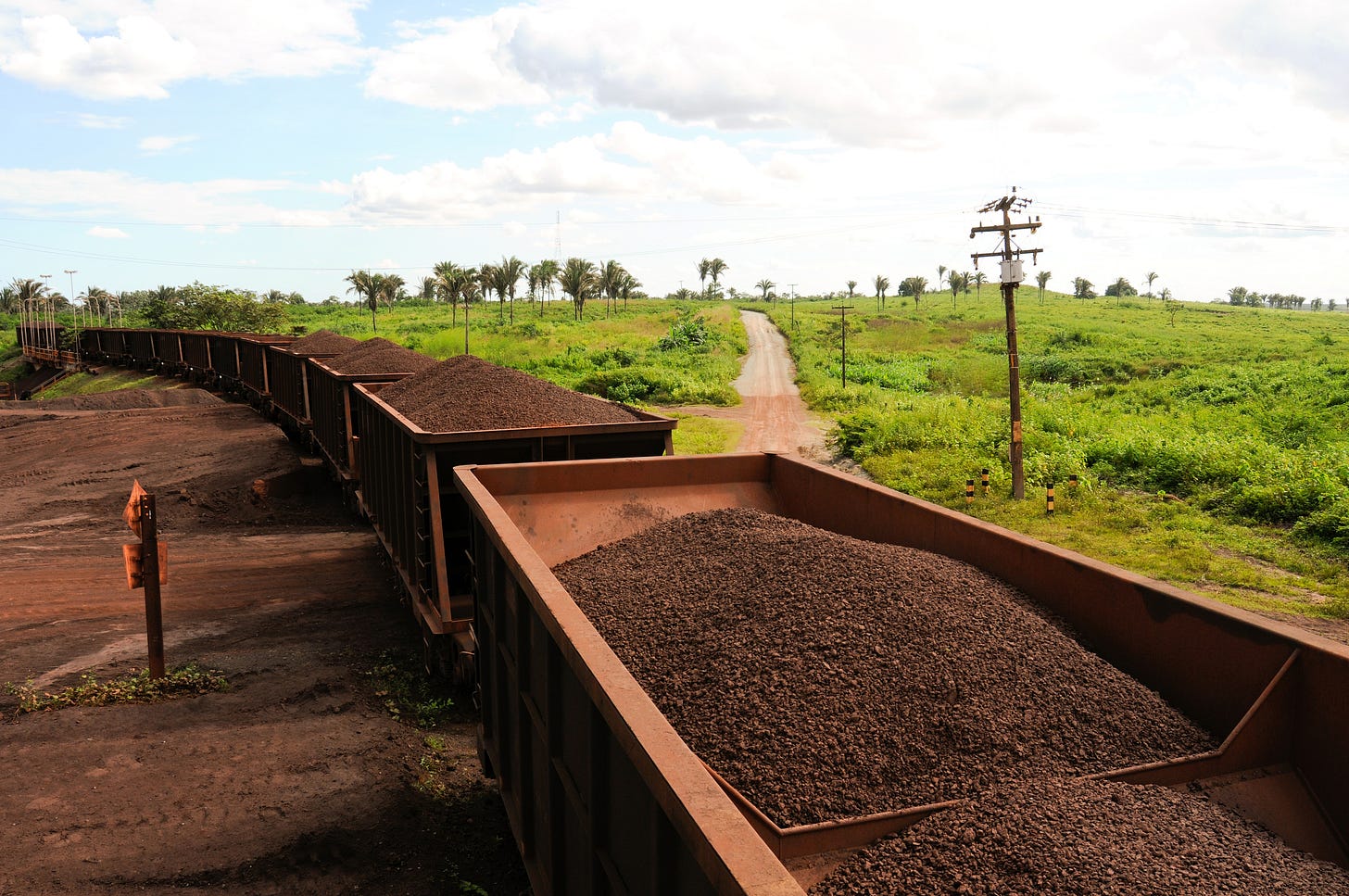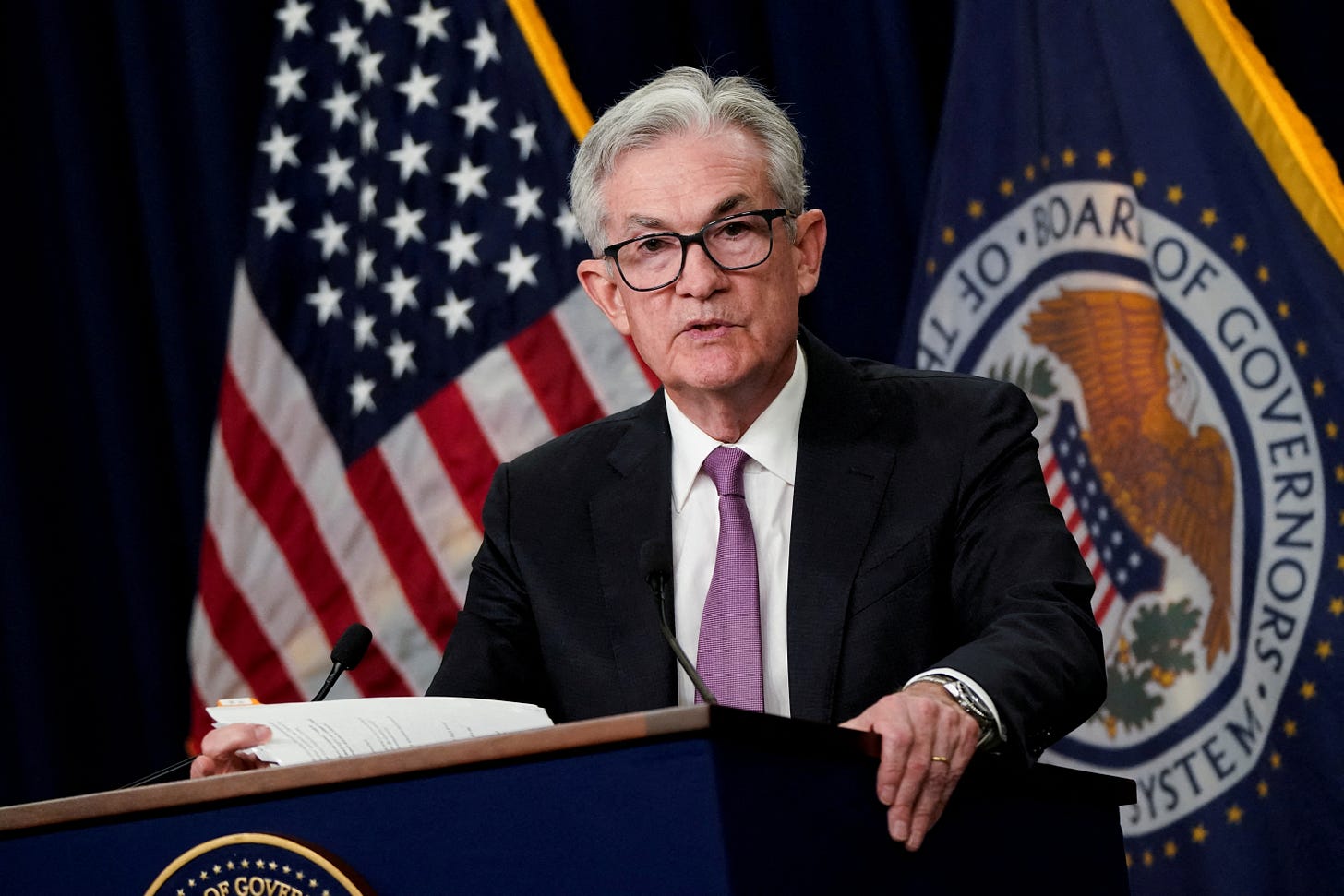The Rise of the Indian Traveler (and Consumer)
Also this week: Indigo Airline, Emerging Markets Comeback, Iron Ore Declining, Bangladesh's Future, China Air Travel, and South Asian Mangoes
The Rise of the Indian Traveler
In the decade before Covid, the world was abuzz about the rise of the Chinese traveler. In the 2010s, as many of you will recall, a defining feature of a major European city was the large group of Chinese tourists huddling under a tour leader’s umbrella, or shopping in high-end stores in Rome, or simply strolling Piazza San Marco in Venice or the Champs-Elysees in Paris.
Numerous articles declaimed a new era driven by Chinese travelers - including one from your humble correspondent in Foreign Policy magazine back in 2017.
Today, the buzz is growing about the Indian traveler.
The Economist had a great story over the past week that explored the rise of the Indian traveler as well as the rise of IndiGo Airline (they also had a great story about Indian mangoes). Let’s start with the travel story.
Witness this in the Economist:
India’s economic rise has lifted millions out of poverty and given the country greater geopolitical heft. Less obvious is the effect of its growing consumer class on other countries. International departures from India more than doubled, to 27m, in the decade to 2019. Overseas spending by Indian travellers tripled between 2010 and 2023, to $33bn. One forecast suggests it will jump to $45bn next year.
By 2040 the number of international departures could hit 80m or even 90m, reckons McKinsey, a consultancy. That is not far off the 104m Chinese who went abroad in 2019. But Chinese consumers are increasingly staying at home; their foreign travel is not growing as fast as it used to Indians are thirsty to see the world. Unlike the Chinese at a similar stage, however, they are not rushing to Europe. It is countries closer to home that are reaping the rewards.
So, who is winning the hearts and minds of the Indian traveler? Dubai remains the number one spot, but Bangkok is nipping at its heels. Unlike the China travel boom that tilted heavily toward Europe, Indian travelers are staying closer to home. “Middle Eastern and South-East Asian countries are racing ahead,” The Economist reports:
Thailand and Malaysia have suspended visa requirements for Indians. Other countries are recruiting Bollywood stars as brand ambassadors: Abu Dhabi tourism has landed Ranveer Singh, who used to promote Switzerland; Dubai has roped in Saif Ali Khan and Sara Ali Khan, a father-and-daughter duo. The countries that welcome Indians will enjoy both the economic benefits and the cultural soft power that tourism affords.
As Indians travel more, one airline seems to be rising to the top - IndiGo. Founded in 2006, the airline now handles more than 60% of India’s domestic travel, according to The Economist in a separate article - India’s Largest Airline is Flying High.
“IndiGo is among the world’s ten biggest airlines measured by number of flights,” The Economist wrote. “Bar the pandemic, it has been consistently profitable since its third year of operation. And it intends to get much bigger. Last year the company placed an order for 500 planes, the largest ever for an airline. A new plane joins its fleet every week.”
The big airline purchases rests on a big bet: Indians will continue taking to the air in larger and larger numbers.
“CAPA India expects India’s passenger volume to more than double by 2030, to over 500m,” The Economist wrote. “The government is eager for the country’s carriers to establish themselves as super-connectors that compete with the likes of Emirates, a Middle Eastern airline. New airports are being built that should help enable that.”
India Travelers by the Numbers
$33b - Foreign spending by Indian travelers last year, tripling since 2010
$45b - Expected foreign travel spending by 2025
80-90 million - # of international departures by 2040 (McKinsey)
93 million - current number of valid Indian passport
Source: The Economist, McKinsey
Indian Consumer Fund Leads All Emerging Market ETFs
In addition to the rise of the Indian traveler, there’s also the story of the rise of the Indian consumer.
I was looking at the year to date (YTD) results of emerging markets-focused ETFs over at Seeking Alpha and the grand prize goes to….yes, the Indian consumer (well, almost).
The Columbia India Consumer ETF - INCO - is up 26.02% on the year and was in the lead yesterday, but the Global X MSCI Argentina Index popped today and slightly edged INCO, but they remain neck-and-neck for the top spot.
Here are the top five YTD
INCO Columbia India Consumer ETF - ~ +26%
ARGT Global X MSCI Argentina ETF - ~ +26%
EWM iShares MSCI Malaysia ETF - +21.74%
AFK VanEck Africa Index ETF - +19%
SMIN iShares MSCI India Small-Cap ETF
Emerging Markets Comeback
So, is it time to invest in emerging markets equities again?
The always insightful Ruchir Sharma says yes. He penned an important column in the FT this week: The world should take notice - the rest are rising again
He writes: “A major comeback is under way. After weakening sharply in the past decade, emerging economies are rebuilding their growth lead over developed economies, including even the strongest one, the US, to levels not seen in 15 years.”
Sharma, as you may recall, made an early call in 2012 that the emerging world’s rise in the first decade of the 21st century was now on the wane. He now feels comfortable to declare the emerging markets as the next comeback story.
The current revival is driven by nations other than China, whose difficulties (from a shrinking population to heavy debts) obscure the strengths of its emerging world rivals…In the coming decade, exports are likely to be particularly strong for green technologies and the raw materials required to build them, like copper and lithium, which are supplied mainly by emerging nations…Investment is increasing in many emerging markets, drawn to a menu of strengths — India’s large domestic market, Malaysia’s fertile environment for data centres and Mexico’s proximity to the US.
As economic growth picks up, corporate earnings tend to follow…In the second quarter of this year, for the first time since 2009, corporations in emerging markets (excluding China) beat earnings forecasts by a wider margin than their US counterparts did. Profit margins have been improving in emerging markets and stagnating in the US for 18 months now.
After a long sojourn in the shadows of the US, emerging markets are an increasingly attractive bargain. Though they are back to posting faster earnings growth, they trade at record low valuations relative to the US.
China Air Travel Roaring Again
Channel NewsAsia reports that “China's aviation sector has shown significant recovery this year, with domestic travel surpassing pre-pandemic levels.” The latest recovery is driven by domestic travel.
“According to official data, China registered nearly 350 million air passenger trips in the first half of this year, a 24 per cent increase compared to the same period in 2023,” ChannelNews Asia reported.
The report noted that “international routes remain a drag,” though “the country is expecting air travel to reach a record high this year.” ChannelNews Asia reports.
The End of the China-Led Iron Ore Boom?
The Chinese international traveler boom was built on the rising incomes of a growing middle class. That middle class is now being squeezed by an economic slowdown, fueled by an over-leveraged property market, a state-led crackdown on the dynamic tech sector, rising provincial government debt levels, declining consumer confidence, and growing geopolitical tensions with the United States and Europe.
China’s decades-long boom fed a commodities super-cycle for everything from iron ore to copper. Many of those bank-financed empty apartment buildings today weighing on the property sector drove the massive demand for iron ore that fed China’s steel furnaces. That process delivered what we have come to expect today of China’s Tier 1 cities: lots of new glassy skyscrapers and soaring apartment towers.
Today, a weakening China is also slowing the commodities complex.
Javier Blas of Bloomberg has written an insightful column on the boom and coming bust-ish of iron ore, driven mainly by China. He writes:
Oil, copper, soybeans and a handful of others monopolized the attention — but of all commodities, the humble lump of iron ore benefited the most from the Chinese economic boom of the last 25 years.
It was an astonishing bonanza: From the late 1990s to earlier this year, iron ore prices jumped nearly tenfold, more than any other major commodity; traded volume tripled; Australian commodity tycoons become billionaires; mining companies turned, even briefly, into Wall Street darlings; and mighty legal battles broke for control of the last untapped mineral deposits.
And now, it’s over: The greatest commodity boom thus far of the 21st century has ended. China inflated it — and China, too, is bringing it down.
The Bloomberg piece included a great chart on the dazzling price rises of iron ore and other commodities since the mid-1990s. See below:
Blas reports that iron ore prices have fallen below $100 a metric ton - “down 55% from its all-time high of almost $220 a ton set in 2021.” He goes on to write that: “Beyond, the outlook looks somber as Chinese steel demand reaches a zenith. Pinpointing the exact date is foolhardy, but now it’s becoming clear that China hit peak steel demand somewhere between 2020 and earlier this year. The reason? The shift in its economic model to services and away from heavy investment and housing construction.”
”During previous downturns, Beijing rescued its economy — and thus the iron ore and steel sectors — by indulging in a debt-fueled binge of construction,” Blas writes. Those days are over.
It was a good piece and well worth the read, but make no mistake: the world will still need a lot of steel. If you are looking for a barometer of economic growth, look no further than steel, and so if you think that the world will continue to industrialize and urbanize over the next decade (I do) and beyond, then steel — the most commonly used metal in history — will be vital to that story.
Notable Quotable
“The time has come for policy to adjust.”
Jerome Powell, US Federal Reserve Chair, speaking in Jackson Hole, Wyoming, hinting that an interest rate cut is likely at the next Fed Open Market Committee meeting in September
Emerging World Tribune
In a commentary published in the Japan Times, Brahma Chellaney asks this question:
“Will Bangladesh Go the Way of Pakistan?”
He writes:
The recent violent upheaval that led to a military-backed regime change in Bangladesh, followed by the country’s pleas for $6.5 billion in international bailouts, raise concerns about the future direction of the world’s eighth most-populous country.
The toppling of Prime Minister Sheikh Hasina’s government has also triggered an ominous resurgence of radical Islamism, including systematic attacks on religious minorities.
As recently as 2022, Bangladesh was seen internationally as headed toward rapid economic development. But today, nothing better illustrates the unraveling of Bangladesh’s economic success story than its urgent requests for a new $3 billion International Monetary Fund bailout, as well as $1.5 billion from the World Bank and $1 billion each from the Asian Development Bank and the Japan International Cooperation Agency.
And finally, with all the talk of Indian travelers and consumers, this story in The Economist caught my eye: In Praise of Mangoes
When I lived in Dubai in the late 1990s, I regularly visited a massive outdoor fruit market to buy Indian mangoes. I’ve been hooked since then.
The Economist notes that despite India’s dominance in global mango production, it remains a small player in exports.
“The mango is a gift of love, a lubricant for dealmaking, a plausibly deniable bribe, a reward, an indulgence and a necessity. It is part of the very essence of being Indian—or Pakistani,” The Economist writes. “However, most of South Asia’s mangoes stay at home. India is the world’s biggest mango producer, with volumes greater than the next nine growers combined, according to Tridge, a data firm. Yet its share of the global export market by value is a meagre 7%. Mexico, which produces a tenth as much as India, accounts for a quarter.”





